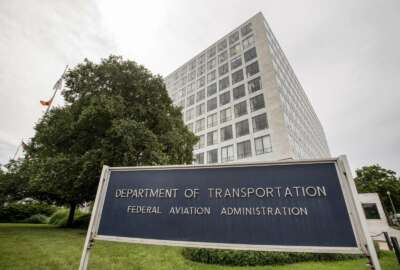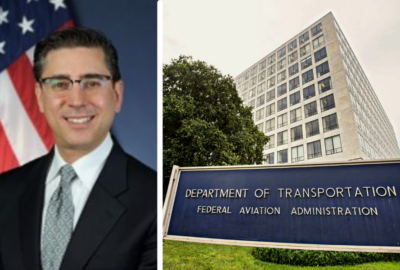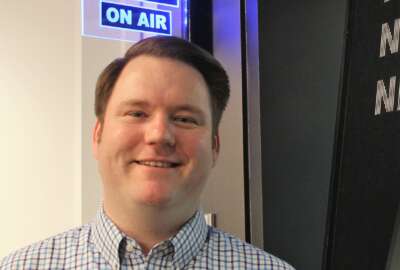
The Transportation Department maps out its next five years of research
The Department of Transportation (DOT) has a lot of goals for its latest five-year R&D and technology plan, including a transportation system that is safer, gre...
The Department of Transportation (DOT) has a lot of goals for its latest five-year R&D and technology plan, including a transportation system that is safer, greener and more resilient than the one we have now. For highlights, the Federal Drive with Tom Temin talked to Robert Hampshire, DOT’s deputy assistant secretary and chief science officer.
Interview transcript:
Tom Temin
I’m struck in reading this, it’s almost 100 Page plan, that the complexity of the transportation system, the different modes, and the different modes within the modes, electric gas, and so forth. And then the chain from the consumer, the people that travel all the way back to manufacturers. How do you incorporate all of this into any kind of a cogent plan?Robert Hampshire
That’s a great point. Part of what the department’s doing is really, we want to make sure we have the safest, most efficient transportation system in the world, that particularly improves the lives of the traveling public. And it is a complex system. But it’s one that really, at the end of the day, we want to make sure that the communities from rural to urban in America really, is competitive and thriving.Tom Temin
And I was also struck by the list. There’s about eight different components of transportation, some of them oversee the different modes, or regulate the different modes, but they all have research arms. And that’s where that science and technology piece roughly takes place?Robert Hampshire
Yeah, absolutely. So part of what we’re doing as we’re implementing the bipartisan infrastructure law, particularly as we’re moving towards building a better America. We’re implementing now, to improve the lives of Americans, but also we need a plan for the future. And so, in a plan to help implement that those goals, and so that’s where the research plan comes in. It’s really like a roadmap to really make sure that we’re answering the questions, providing the research so we can implement and have results today.Tom Temin
And maybe highlight what the overarching goals for all of the modes are. Because each mode has its millions of sub issues that it’s got to deal with. But somehow, for the DOT level, it all adds up to a set of about five or six basic goals.Robert Hampshire
That’s right. There’s a big plan, but at the heart of it, one of the key goal is safety. One of the forefront is making sure that the transportation system across all the modes are safe. But in addition to safety, other key priorities are about economic competitiveness, making sure that us, as a nation, is competitive globally. But also, fighting the climate crisis and resiliency of our infrastructure. So and also making sure that the system works for more people, that’s the equity piece, from rural to urban, to everyone in between making sure that the transportation system works for more Americans.Tom Temin
And there was one line in there where you stated that people locally should have more say over the decisions that are made by their transportation or local officials, whoever those might be. And how do you reconcile that with a national federal plan with these aid agencies? And yet, like in the county I live in, they just unilaterally are narrowing roads to make room for bicycles that never appear. And making all the motorists really mad, that kind of thing that gets down to my street, sometimes, or my traffic light.Robert Hampshire
No, absolutely. It’s a system where we had at the federal level, we provide guidance and leadership, but ultimately, in the bipartisan infrastructure law, and the way the transportation system works, a lot of the decision at the state and local level. And so with this research plan, we held stakeholder engagement sessions, we talked to professionals from who work at the state level, local, and federal. So really, it is about input from everyone across the whole transportation system.Tom Temin
And the infrastructure bill, of course, gave a couple of 100 billion dollars, specifically to roads, bridges, rail systems, and so forth. Is the research that is required to be able to spend that in the most wise way possible?Robert Hampshire
Absolutely. So part of it is, making sure what we’re implementing now and making sure that those funds are used the most effectively now, but we want to make sure that we’re building a transportation system for the future. Because when you build a bridge, it lasts for a long time. And so we want to make sure that’s done using the best practices, making sure that the most effective data, the most current approaches. So absolutely, is about building and supporting infrastructure now, but making sure it’s ready for the future as well.Tom Temin
And briefly, the research, specifically that will be done, and we’ll talk about what some of those topics might be, but is that done by the agencies themselves in federal laboratories? Those exist and some of the transportation related research takes place out of DOT, NASA, Homeland Security. Or is it mostly through grants to academic and think tanks and those types of two groups?Robert Hampshire
I’d say a little bit of all the above. Most of the research, that’s done in the bipartisan infrastructure law, a lot of the funding, like I say, goes to the states. And the states provide research, but us as a federal, Department of Transportation as well, we do some of that work internally, but much of it, through contractors, through academics, through researchers across the nation.Tom Temin
We’re speaking with Dr. Robert Hampshire. He’s deputy assistant secretary for Research and Technology, and the chief science officer at the Transportation Department. And give us some examples of specific types of research that needs to be done. I know one of the priorities is a more resilient transportation system that can recover from disasters. And frequently, a given disaster can have multimodal effect.Robert Hampshire
Yeah, that’s right. Really part of, like I said, safety is one of our number one priority. So certainly, research that makes roads and drivers a safer. One approach is, we unveiled something called the national roadway safety strategy, which really is an all hands on deck approach, to make sure that both roads, vehicles are safe, but also people are driving at safe speeds, making sure that something called post crash care. So after a crash does happen, making sure that ambulatory services and so forth, are using the greatest, latest techniques to make sure people survive those crashes. And so, specifically, on the national roadway safety strategy is a really specific framing for a lot of the, not just research, but action that we’re taking here today.Tom Temin
And up in the air, there’s been some transportation kind of issues lately that have affected the country. Some of them relate to modernization of the, or by the [Federal Aviation Administration (FAA)] of its own systems. And the next gen seems to be ever out there in the future for completion. And the [Notice to Air Missions (NOTAM)] system, which nobody ever heard of till it failed. It has a 10-year-modernization plan. But that’s different from research, that’s just getting agency activities of long standing into gear. So how does that relate? What are the next research areas, say, for air transportation?Robert Hampshire
That’s a great question. Our national airspace in our system is one of the, in some ways the envy of the world, some of the safety record. And so that’s something that we, as a department, want to continue to invest in and focus on when it comes to safety. But some of the new emerging issues are things in some of our Advanced Air Mobility, that’s like, unmanned aerial systems, something called vertical takeoff and lift systems. Small planes, electric, the future has even autonomous aviation. So these are things in the future, but really, the research plan contemplates trying to lay out a framework for those systems. So, UAS, Unmanned Aerial Systems and Advanced Air Mobility, are some of the new emerging topics in aviation.Tom Temin
In that case, then DOT has to work a lot with NASA, because a lot of research falls on them. There’s a lot of interplay between NASA and FAA.Robert Hampshire
Absolutely. So all of government approach, when it comes to some of those newer aviation topics. So we do collaborate and actively with other interagency partners and industry.Tom Temin
I was thinking maybe this time around, we really will see everybody have a helicopter. But that idea goes back to about 1950, I think. Maybe this time, drunks and helicopters, that’ll be fun. And what about rail? Again, that’s, of course, we had that crash, that has turned people to the idea of rail safety. And here, again, there’s a lot of systems that are known that can help rail safety. But they’ve been expensive and slow to get implemented on every mile of track in the country.Robert Hampshire
Yeah, the research plan also has a rail, that’s one of the art key modes. Again, leading with safety, we know that we need to continue to invest, and improve safety in rail. And so that’s one thing that’s in the plan. But there are systems that are being implemented. That really, something called positive train control, systems that really use a system like GPS to make sure that trains keep a safe distance from each other, or that they can stop and brake appropriately. So those kinds of systems are contemplated in this research plan as well.Tom Temin
And by the way, a lot of the track in the United States is in terrible condition. That’s primarily the railroads own financial responsibilities or anything in the infrastructure bill that helps just the basic infrastructure of rail, the tracks and bridges, the trains go on.Robert Hampshire
Yeah, so the infrastructure bill really did invest it in rail in big ways, as both on the passenger side, and also the freight side. And so there are investments there that our Federal Railroad Administration is taking on as a mode. And in the research in the department, we certainly are supporting some of those key priorities lead with rail safety.Tom Temin
And just give us the visionary standpoint view of what the transportation system would look like, given the research agenda to try to get the nation there.Robert Hampshire
I use a metaphor, where we used to think that all the planets revolved around the Earth. And so we had everyone who revolved around us, we were in the center. But then we learned that, actually, no, the Earth revolves around the Sun. And so it’s a similar thing here, we want the transportation system to revolve around people. We want not just people have to revolve around their mode, their car, the rail, their micro scooter, it should be centered around people and communities. And then all the other modes and ways to travel revolve around the people. And so that’s really the vision here, is one as a people centered vision that really is something called a system of systems, we view ways of getting around. And we want to make that as effective and as efficient and safe for as many people in the traveling public as possible.Tom Temin
And maybe just a final observation, there is so much difference between people and the modes and the way they get around, in rural areas versus urban. It seems like the place for the most progress to happen quickly, is in the really dense areas, more so than in the one traffic light town out there in the middle of North Dakota.Robert Hampshire
Well, in the in the plan or in the research plan, and also in the bipartisan infrastructure law, there’s really terrific programs for rural transportation that’s across all modes, from a rural aviation at small airports, all the way through travel and access to hospitals in rural areas. We know that access to groceries and food are a big deal in rural areas. And so the department is working on that with our partners in the local and states. And so rural transportation actually is a really big deal and something that we certainly care deeply about, as we’re trying to build out a safe economically competitive transportation system.Tom Temin
But teleportation still not here yet.Robert Hampshire
Not quite yet. We’re working on it.
Copyright © 2024 Federal News Network. All rights reserved. This website is not intended for users located within the European Economic Area.
Tom Temin is host of the Federal Drive and has been providing insight on federal technology and management issues for more than 30 years.
Follow @tteminWFED





